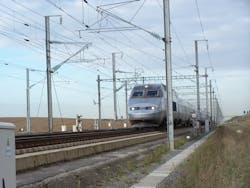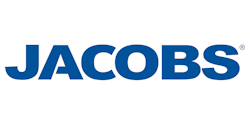Almost three years ago I authored a whitepaper titled “High Speed Rail in the US: From Concept to Reality” which was published in "Railway Track & Structures (RT&S) magazine Oct & Nov 2010. At that time, the rail industry was on fire about the potential and promise of implementing high-speed rail in the United States. It was an exciting time. I thought to myself, “Talk about being in the right place at the right time."
Let’s look back … In 2008 Congress established the Passenger Rail Investment & Improvement Act (PRIIA). In April 2009 the Obama Administration released its Vision for High Speed Rail in America. Shortly after that, the FRA published guidelines for detailed grant application requirements for High-Speed Intercity Passenger Rail (HSIPR) funding under the American Recovery and Reinvestment Act (ARRA). Here in the Northeast, Amtrak released its Vision for High-Speed Rail in the Northeast Corridor in September 2010.
Various associations led the charge championing the benefits of high-speed rail. Numerous suppliers and foreign countries were willing to set up shop in the United States providing jobs, technology and institutional knowledge. Hardly a day went by without an article, opinion or blog commentary about high-speed rail whether it was pro or con.
I briefly talked about the commitments made by the Obama Administration, the numerous PRIIA grant applications, and the awards to states eager to make high-speed rail a reality. At that time California and Florida were the leading candidates to be the first to move ahead to build and operate high-speed rail, with the Midwest Chicago Hub corridor gaining steam.
Where Are We Now?
Well due to the financial crisis and shifts in government priorities, high-speed rail has slowed to medium speed. The November 2010 elections changed the momentum drastically. Ohio and Wisconsin said no thanks and returned their funding but the biggest disappointment occurred in February 2011 when Florida halted its high-speed rail program despite 90 percent federal funding and commitments from various consortiums to provide the remaining shortfall. The right-of-way was there, and the industry teams representing hundreds of years of high-speed rail operating experience were primed to be the first to operate and maintain a true high-speed rail system in the United States. Finally, Congress rescinded $400 million of 2010 unallocated funding and eliminated $1 billion in appropriated 2011 high-speed rail funding.
Is High-Speed Rail Still on Track?
Not a day goes by without the pundits and opponents spreading the message that high-speed rail in the United States is dead. However, I believe the vision is moving forward. The USDOT redistributed the $2 billion funding rejected by Ohio, Wisconsin, and Florida. Twenty-four states applied for that funding (100 applications requesting $10 billion). Through the doom and gloom, 13 programs in 32 states are still moving forward. Systems are still being planned, environmental work and preliminary engineering is continuing. The FY 2012 budget designated $53 billion over the remainder of the decade to high-speed rail. Incremental high-speed (110 mph) in the Midwest between Chicago and St. Louis became operational in the summer of 2012 and the majority of the corridor in Michigan between Chicago-Detroit-Pontiac is on track to operate at higher speeds by the close of 2014.The message still is clear — the majority of states , especially those in the Northeast, want high-speed rail. Despite leadership changes, never-ending legal battles and other associated bumps and bruises, California is on target for the first truly high-speed operational (220 mph) along the Central Valley Corridor. On August 19th of this year, the CHSRA signed a $985 million contract with the Tutor-Perini Consortium to provide design-build services for the first 30 miles between Madera and Fresno.
European and Asian Experience
As I stated back in 2010, the lessons learned from Europe and Asia are this — high-speed trains have changed the nature of travel and the way people live.
I have been fortunate to visit Europe and see high-speed rail up close and the positive impacts it has had. Not only did I get to ride both the TGV (France) and ICE (Germany) trains, I was able to walk the tracks and right-of-way and tour the shops where the components are produced and fabricated.
I witnessed first hand how towns and industries along the routes are thriving with new jobs and economies being created. The high-speed industry has transformed Europe bringing cities and countries within a few hours of each other. It was a thrill traveling between Paris and Strasbourg (at 186 mph) and Brussels to Cologne and on to Berlin (at 160 mph). High-speed rail has been a way of life in Europe for more than three decades. The scope of their systems and stations is awe inspiring. The stations in Liege, Strasbourg and Berlin Haupthanoff are works that American engineers and architects can only dream of working on, with the latter being the focus of a History Channel special documenting the engineering, technology and jobs created constructing this station.
I found myself questioning why the European leadership and politicians made and continue to make the investment in high-speed rail and the United States continues to lag and fall farther behind the rest of the world. How will the United States compete if we can’t move goods and people in the upcoming years? High-speed rail must and can work in the U.S.
Funding & Finances
At what cost? According to the International Union of Railways (UIC), the average costs in Europe to construct one mile of high-speed rail range between $24 and $60 million, not including maintenance costs and cost for rolling stock.
Here in the United States our roads and airports are overcrowded with congestion at the tipping point. Daily commuting has become wasteful and slow. For trips between 100 and 500 miles, high-speed rail is very competitive offering faster travel times than highways, conventional passenger rail, or air. In Europe there has been a modal shift with air travelers shifting to rail basically eliminating the short-haul air market. Such a shift frees up valuable runway slots at airports for longer distance flights, for which air is ideal, and highways have become less congested, cutting emissions and reducing accidents. When you factor in the environmental benefits that high-speed rail offers over air and dependence on imported fuel, it is very difficult to argue against the benefits and value of high-speed rail.
So you say we can’t afford to fund and build high-speed rail? China is investing more than $300 billion to build more than 16,000 miles of high-speed track by 2020. Why can’t the United States make the same investment? Do we really have a choice?
Let’s take a look at the costs. According to the 2009 Urban Mobility report issued by the Texas Transportation Institute, in America’s 439 urban areas in the year 2007, Americans lost more than $87 billion (delay and fuel costs) a year driving their cars — stuck in gridlock — which works out to approximately $760 (value of delay and wasted fuel) for every traveler. We wasted more than 2.8 billion gallons of gas — a staggering three week’s worth per traveler. Time wasted in traffic: 4.2 billion hours, which works out to a yearly delay of 36 hours for the average peak period traveler, or almost a week’s worth of vacation.
With future population growth and the expected traffic generated with it, congestion will only increase, especially in the Northeast Corridor (NEC) where it is the densest and most economically populated Mega-region producing 20 percent of the nation’s total gross domestic product on just 2 percent of its land mass.
Getting Past Sticker Shock — Why HSR is a Good Investment
Implementation of high-speed rail will have to be done in small steps. While high-speed rail in Europe has successfully linked neighboring countries, connecting the large mega regions in the United States will take time and money, lots of money — approximately $500 billion to $1 trillion over the next 40 years!
The next federal transportation authorization bill needs to answer this question: how do we fund high-speed rail? A dedicated, continual funding basis is imperative to advancing and developing a national multi-modal transportation system. The FRA grants were the first step toward enabling the nation’s first high-speed trains to be operational by 2015; however, without a sustainable funding source we will fall further behind and cripple our economy. The Highway Trust Fund is basically insolvent due to reductions in fixed motor fuel tax resources and truck-related user fee receipts. The federal gas tax has not been increased since 1993 nor adjusted for inflation. Congress needs to consider permanent and sustainable funding similar to the Highway Trust Fund.
In Europe, most of the infrastructure management such as the capital investment for infrastructure and maintenance are made by public companies or national government, while the operational investments are made by railway companies or in some instances private companies on a non-subsidized basis.
Sponsorship at the national, state and local levels is absolutely critical to the success of high-speed rail in the United States. In addition to the federal transportation reauthorization bill, alternative and innovative funding sources will need to be considered such as state and local investments and in some cases, public-private partnerships, similar to those utilized in Canada, the Netherlands, Portugal, and for the link between Spain and France. China and Taiwan are utilizing build-operate-transfer (BOT) methods combining public and private resources. It must be emphasized that attracting private investment will require offering investors long-term support and stability.
Francis Miller, P.E. is chief track engineer; director of high speed rail with Jacobs Engineering.




